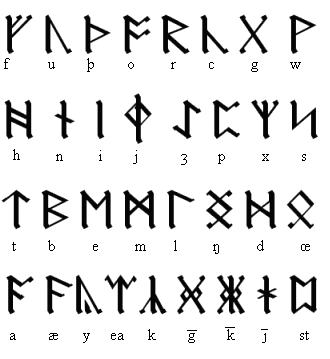
How Eostre is usually recognized by modern Heathens is by having what is called a "blot" or "forn" where an offering is made to the appropriate goddess which represents fertility. The Germanic peoples had a LOT of goddesses, many unique to a specific locale and tribe, and many having overlapping attributes, fertility being just one of them. It could be appropriate to have a forn (which is what about 99.9999% of Heathens do, as blot literally means "blood" and there isn't a whole lot of animal sacrificing going on these days) to any of the following goddesses:
Freya- Goddess of war and fertility, with a distinct focus on female sensuality.
Frigga- Odin's wife- goddess of hearth and home.
Idunna- Keeper of the apples that made the gods eternally young.
Ostara/ Eostre- German and Anglo Saxon goddesses of fertility.
Sadly, we really only know Ostara/ Eostre in name only, but we do know that she was associated with the month of April, and likely to be associated with the return of spring and fertility.
The first three goddesses I listed are from Icelandic lore, with Freya also being sporadically mentioned in what little surviving German and Anglo Saxon lore remains. Personally though, the fact that very little info about Eostre is out there is actually very exciting to me. This allows room for creativity, something that is sometimes lacking in the Heathen community. Heathens often make many lofty claims to authenticity, but it is still a reconstructed religion which is likely to bear almost no resemblance to the original faith. Since my focus is on Anglo Saxon Heathenry, I will now speak about an obscure, but still very powerful goddess and Holy Tide, both known as Eostre.
Eostre is an important and joyous, albeit somewhat obscure Heathen holiday. Much of our knowledge of it is recorded by the Christian scholar Bede who tells us that the month of April was known as Eostremonath by the Anglo Saxons. Although Eostre's true attributes are unknown, it is speculated that her name means "east" and that she is associated with fertility, as in the sun rising in the east, and spring returning. This confuses me a bit, as the previous month's Holy Tide is known as Hrethmonath, and is related to the goddess Hretha. Hretha is speculated to be associated with sacrifice and war. The month before that (February) is Solmonath, and is associated with the goddess Nerthus, also known as Hertha or Aertha. All these goddesses who possess similar names (and functions) seem to be an overlap of various local dieties who could have been one in the same, or evolutions of the same godess(es).
In the interest of keeping with the Anglo Saxon traditions, I may very well hold a Hretha forn next year, as any "tough" goddess is surely one I can relate to, having worked with both Freya and Skadhi in the past with great results. Hretha may have actually been the Anglo Saxon's version of the Norse goddess Skadhi, as we associate both goddesses (with what little is known about Hretha) with winter and hunting.
Since I like to keep the Holy Tides distinct from one another, I prefer to look at Hertha as a goddess of the earth and agricultural fertility, and Eostre as more of a goddess of the flesh and human reproduction. Both have their place in worship of course, and both have very similar, almost interchangeable characteristics, but as a modern Heathen I feel it is necessary and useful to differentiate the two. Hertha is also known as Jord by the Scandinavians, and Hretha seems to be unique to the Anglo Saxons. I have often held my Hertha blot in March rather than February, as February hardly feels like the end of winter here in New England!
Hot cross buns, rabbits and eggs all come from ancient Heathen customs and were appropriated by the Christians in order to convert the Germanic tribes more easily. Much like "Christmas" trees, by appropriating these familiar images the Christians were able to sell their new religion to the Heathen tribes more easily. The problem with this appropriation is that it came at a price, and that was the destruction of the native gods and goddesses. That doesn't mean that we cannot bring them back though, even if we don't know much about them. Through working with them and embracing the holy powers, we can re- learn the knowledge that has been lost for so long, and regain our connection with the Holy Powers!


6 comments:
As a Heathen, I'm confused as to your reference to blot as being called a "forn". Forn just means "old" in OE.
Forn in its verb form means "to sacrifice". It is used more in relation to the "sacrifice" of some sort of useful item (mead, money, food, etc.) rather than blot, which I associate with the taking of an animal's life for the purpose of feasting.
I started to use the term forn after reading Mike Smith's book "Ways Of The Asatru" where he talks about the difference between forn and blot.
Post a Comment